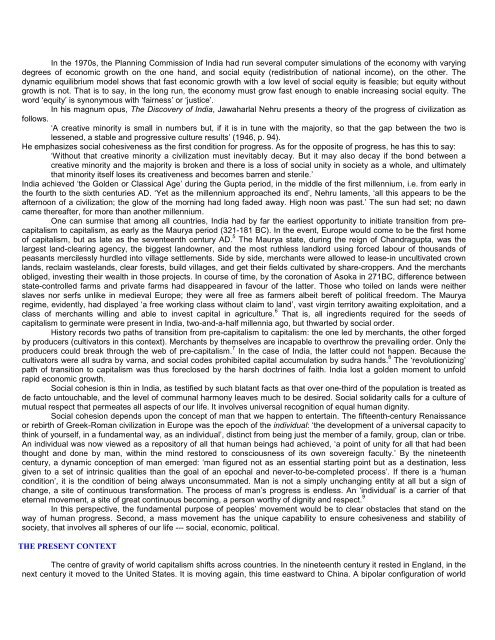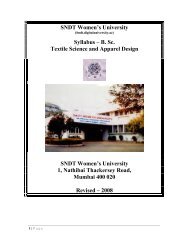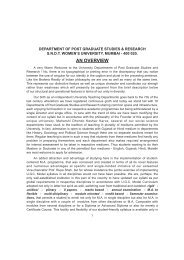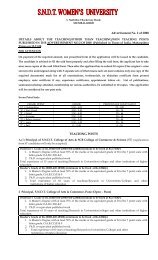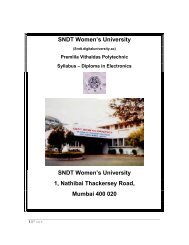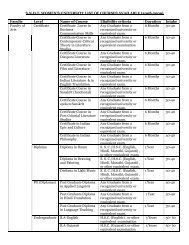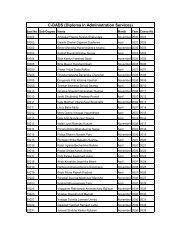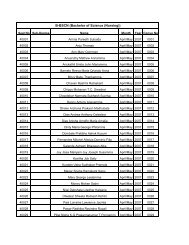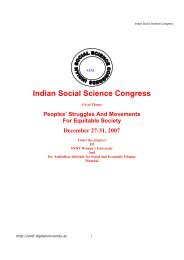XXXI Abstracts Part 1 page 1-189
XXXI Abstracts Part 1 page 1-189
XXXI Abstracts Part 1 page 1-189
You also want an ePaper? Increase the reach of your titles
YUMPU automatically turns print PDFs into web optimized ePapers that Google loves.
In the 1970s, the Planning Commission of India had run several computer simulations of the economy with varying<br />
degrees of economic growth on the one hand, and social equity (redistribution of national income), on the other. The<br />
dynamic equilibrium model shows that fast economic growth with a low level of social equity is feasible; but equity without<br />
growth is not. That is to say, in the long run, the economy must grow fast enough to enable increasing social equity. The<br />
word ‘equity’ is synonymous with ‘fairness’ or ‘justice’.<br />
In his magnum opus, The Discovery of India, Jawaharlal Nehru presents a theory of the progress of civilization as<br />
follows.<br />
‘A creative minority is small in numbers but, if it is in tune with the majority, so that the gap between the two is<br />
lessened, a stable and progressive culture results’ (1946, p. 94).<br />
He emphasizes social cohesiveness as the first condition for progress. As for the opposite of progress, he has this to say:<br />
‘Without that creative minority a civilization must inevitably decay. But it may also decay if the bond between a<br />
creative minority and the majority is broken and there is a loss of social unity in society as a whole, and ultimately<br />
that minority itself loses its creativeness and becomes barren and sterile.’<br />
India achieved ‘the Golden or Classical Age’ during the Gupta period, in the middle of the first millennium, i.e. from early in<br />
the fourth to the sixth centuries AD. ‘Yet as the millennium approached its end’, Nehru laments, ‘all this appears to be the<br />
afternoon of a civilization; the glow of the morning had long faded away. High noon was past.’ The sun had set; no dawn<br />
came thereafter, for more than another millennium.<br />
One can surmise that among all countries, India had by far the earliest opportunity to initiate transition from precapitalism<br />
to capitalism, as early as the Maurya period (321-181 BC). In the event, Europe would come to be the first home<br />
of capitalism, but as late as the seventeenth century AD. 5 The Maurya state, during the reign of Chandragupta, was the<br />
largest land-clearing agency, the biggest landowner, and the most ruthless landlord using forced labour of thousands of<br />
peasants mercilessly hurdled into village settlements. Side by side, merchants were allowed to lease-in uncultivated crown<br />
lands, reclaim wastelands, clear forests, build villages, and get their fields cultivated by share-croppers. And the merchants<br />
obliged, investing their wealth in those projects. In course of time, by the coronation of Asoka in 271BC, difference between<br />
state-controlled farms and private farms had disappeared in favour of the latter. Those who toiled on lands were neither<br />
slaves nor serfs unlike in medieval Europe; they were all free as farmers albeit bereft of political freedom. The Maurya<br />
regime, evidently, had displayed ‘a free working class without claim to land’, vast virgin territory awaiting exploitation, and a<br />
class of merchants willing and able to invest capital in agriculture. 6 That is, all ingredients required for the seeds of<br />
capitalism to germinate were present in India, two-and-a-half millennia ago, but thwarted by social order.<br />
History records two paths of transition from pre-capitalism to capitalism: the one led by merchants, the other forged<br />
by producers (cultivators in this context). Merchants by themselves are incapable to overthrow the prevailing order. Only the<br />
producers could break through the web of pre-capitalism. 7 In the case of India, the latter could not happen. Because the<br />
cultivators were all sudra by varna, and social codes prohibited capital accumulation by sudra hands. 8 The ‘revolutionizing’<br />
path of transition to capitalism was thus foreclosed by the harsh doctrines of faith. India lost a golden moment to unfold<br />
rapid economic growth.<br />
Social cohesion is thin in India, as testified by such blatant facts as that over one-third of the population is treated as<br />
de facto untouchable, and the level of communal harmony leaves much to be desired. Social solidarity calls for a culture of<br />
mutual respect that permeates all aspects of our life. It involves universal recognition of equal human dignity.<br />
Social cohesion depends upon the concept of man that we happen to entertain. The fifteenth-century Renaissance<br />
or rebirth of Greek-Roman civilization in Europe was the epoch of the individual: ‘the development of a universal capacity to<br />
think of yourself, in a fundamental way, as an individual’, distinct from being just the member of a family, group, clan or tribe.<br />
An individual was now viewed as a repository of all that human beings had achieved, ‘a point of unity for all that had been<br />
thought and done by man, within the mind restored to consciousness of its own sovereign faculty.’ By the nineteenth<br />
century, a dynamic conception of man emerged: ‘man figured not as an essential starting point but as a destination, less<br />
given to a set of intrinsic qualities than the goal of an epochal and never-to-be-completed process’. If there is a ‘human<br />
condition’, it is the condition of being always unconsummated. Man is not a simply unchanging entity at all but a sign of<br />
change, a site of continuous transformation. The process of man’s progress is endless. An ‘individual’ is a carrier of that<br />
eternal movement, a site of great continuous becoming, a person worthy of dignity and respect. 9<br />
In this perspective, the fundamental purpose of peoples’ movement would be to clear obstacles that stand on the<br />
way of human progress. Second, a mass movement has the unique capability to ensure cohesiveness and stability of<br />
society, that involves all spheres of our life --- social, economic, political.<br />
THE PRESENT CONTEXT<br />
The centre of gravity of world capitalism shifts across countries. In the nineteenth century it rested in England, in the<br />
next century it moved to the United States. It is moving again, this time eastward to China. A bipolar configuration of world


